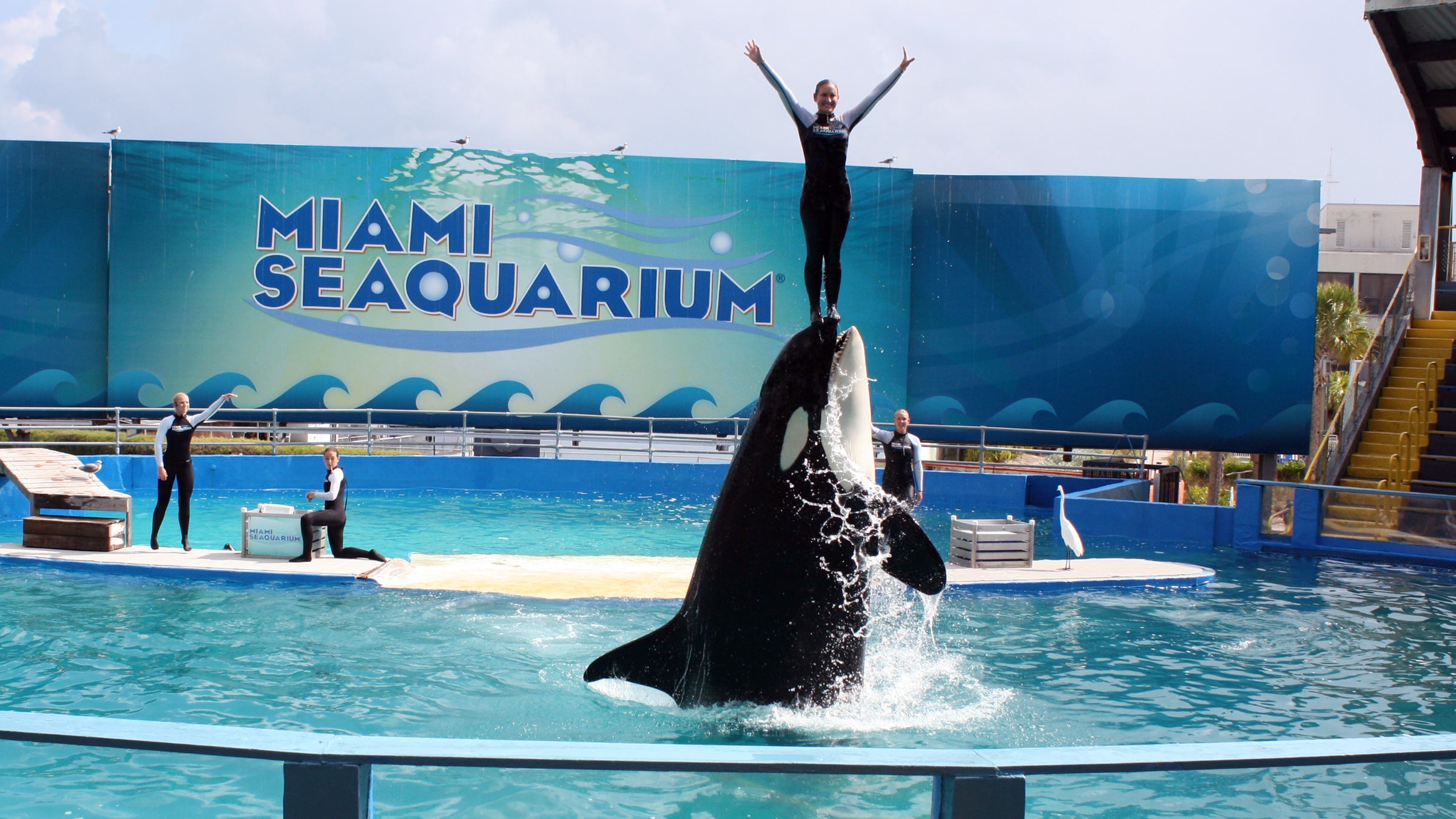Demonstrators have been rallying to free a killer whale named Lolita for more than a year now. This month, activists launched a campaign to add Lolita to a list of endangered whales off the Washington coast. The designation would enable a lawsuit to release her under the Endangered Species Act.
Lolita has lived for 44 years in a small enclosure at Miami Seaquarium. Animal rights activists have championed her cause for decades; the latest plan is to release her into a netted pen off Washington’s San Juan Islands, where she will train to rejoin a pod. Approximately 1,000 protestors gathered outside the venue earlier this month to demand her release.
“They’ll be able to communicate and begin reforming that bond that was broken 40 years ago,” Howard Garrett, director of the Orca Network, .
The plight of captive orcas has gained attention since Lolita was the subject of a 2003 documentary, Lolita: Slave to Entertainment, and after the popular 2013 documentary Blackfish, about the 2010 killing of SeaWorld trainer Dawn Brancheau.
Lolita was captured off Seattle in 1970, when she was about 10 years old, and relocated to Miami Seaquarium, where she has been living in an 80-by-60-foot pen ever since. Officials at Seaquarium think that releasing Lolita could be fatal. “This is a nonreleasable animal,” curator Robert Rose told Reuters. If released, “she’s going to die, without question,” he said. In 2002, Keiko, the orca from the 1993 film Free Willy, died of pneumonia after failing to join a pod upon his release.


